Photographs of
|
|
|
|||||||||
|
|
|||||||||
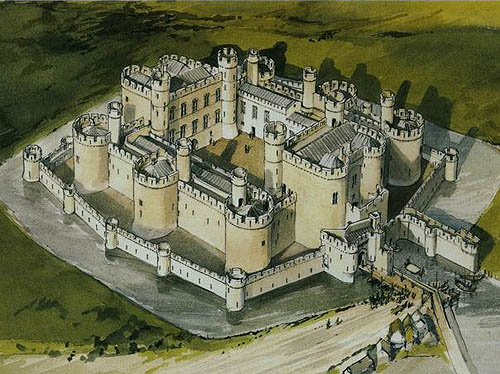 |
Beaumaris Castle Beaumaris Isle of Anglesey, Wales.
Concentric castle built by Edward I - as it might have looked if completed. |
||||||||
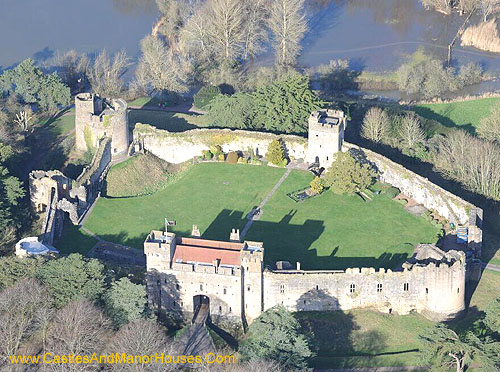 |
Caldicot Castle (Welsh: Castell Cil-y-coed), Caldicot, Monmouthshire, southeast Wales.
Caldicot Castle is an extensive stone medieval castle in the built near the site of Harold Godwinson's former Saxon castle by the Norman earls of Hereford from about 1100
The castle became a Grade I listed building in 1953. |
||||||||
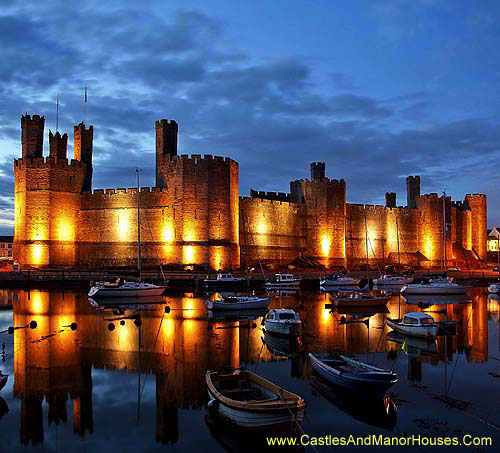 |
Caernarfon Castle (Welsh: Castell Caernarfon) Caernarfon, Gwynedd, north-west Wales
There was a motte-and-bailey castle in the town of Caernarfon from the late 11th century until 1283 when King Edward I of England began replacing it with the current stone structure. The Edwardian town and castle acted as the administrative centre of north Wales and as a result the defences were built on a grand scale. There was a deliberate link with Caernarfon's Roman past – nearby is the Roman fort of Segontium – and the castle's walls are reminiscent of the Walls of Constantinople.
While the castle was under construction, town walls were built around Caernarfon. The work cost between £20,000 and £25,000 from the start until the end of work in 1330. Despite Caernarfon Castle's external appearance of being mostly complete, the interior buildings no longer survive and many of the building plans were never finished. The town and castle were sacked in 1294 when Madog ap Llywelyn led a rebellion against the English. Caernarfon was recaptured the following year. During the Glyndwr Rising of 1400–1415, the castle was besieged. When the Tudor dynasty ascended to the English throne in 1485, tensions between the Welsh and English began to diminish and castles were considered less important. As a result, Caernarfon Castle was allowed to fall into a state of disrepair.
During the English Civil War Caernarfon Castle was held by Royalists, and was besieged three times by Parliamentarian forces. Caernarfon Castle was neglected until the 19th century when the state funded repairs. In 1911, Caernarfon Castle was used for the investiture of the Prince of Wales, and again in 1969. It is part of the World Heritage Site "Castles and Town Walls of King Edward in Gwynedd" |
||||||||
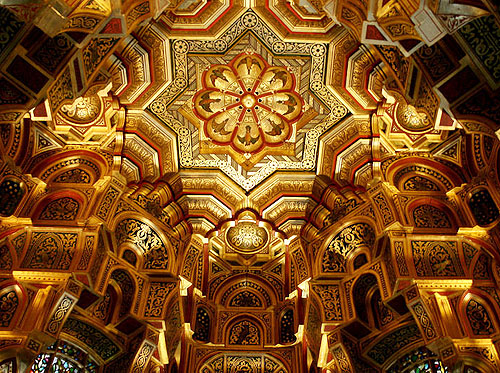 |
The Arab Cieling, Cardiff Castle, Cardiff, Wales
Cardiff Castle is a combination of medieval castle and Victorian Gothic revival mansion located in the city centre.
The original motte and bailey castle was built in the late 11th century by Norman invaders on top of a 3rd-century Roman fort. |
||||||||
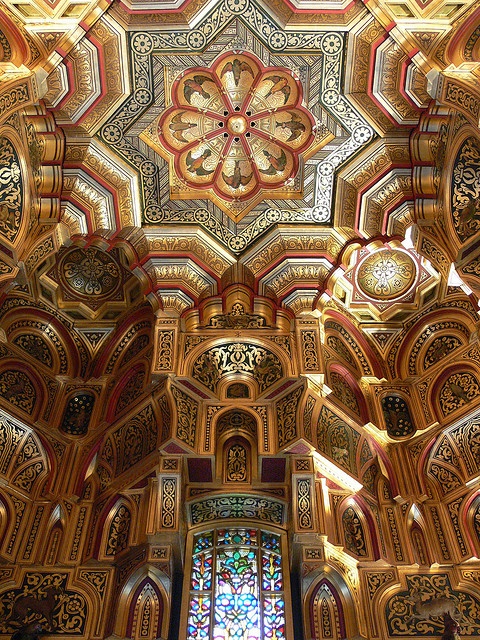 |
The Arab Cieling, Cardiff Castle, Cardiff, Wales
Cardiff Castle is a combination of medieval castle and Victorian Gothic revival mansion located in the city centre.
The original motte and bailey castle was built in the late 11th century by Norman invaders on top of a 3rd-century Roman fort. |
||||||||
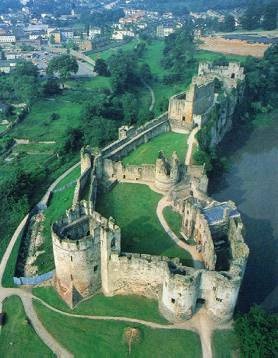 |
Chepstow Castle, 1 Bridge St, Chepstow, Monmouthshire NP16 5EY, Wales
Chepstow Castle, located on top of cliffs overlooking the River Wye, is the oldest surviving post-Roman stone fortification in Britain. It was the southernmost of a chain of castles built along the English–Welsh border in the Welsh Marches.
Its construction was begun under the Norman Lord William fitzOsbern, soon afterwards made Earl of Hereford,
The castle ruins are a Grade I lhistorical monument |
||||||||
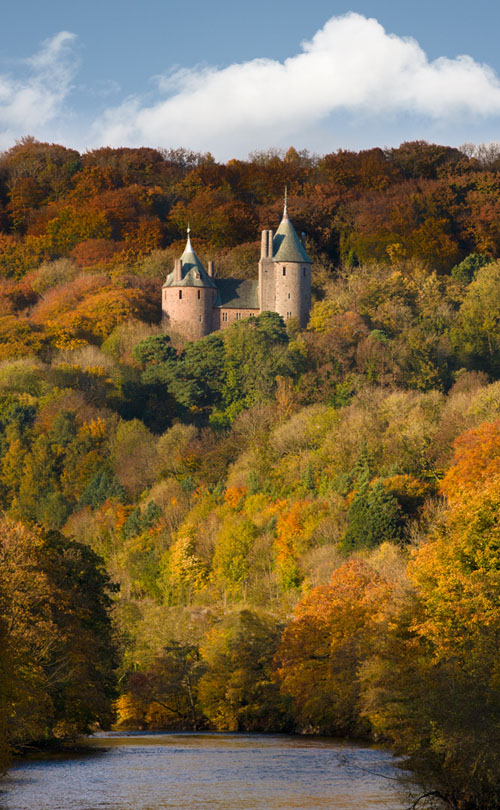 |
The Red Castle (Castell Coch) situated on a hillside above the village of Tongwynlais, to the north of Cardiff, Wales
Castell Coch is a 19th-century Gothic Revival castle built on the remains of a 13th-century fortification. It is a Grade I listed building
Designed by William Burges, it has a superficially medieval appearance, working portcullis and drawbridge. Its sumptuous interiors rival those of nearby Cardiff Castle |
||||||||
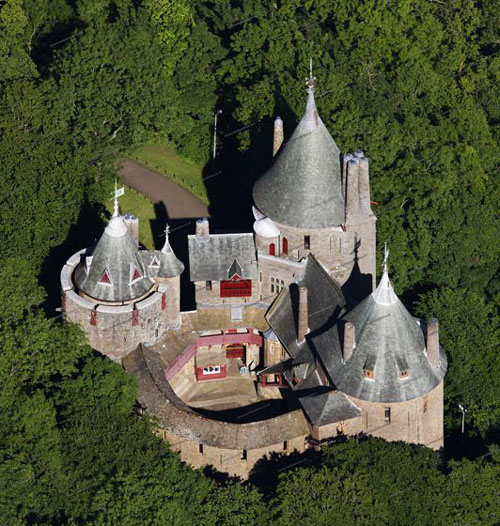 |
The Red Castle (Castell Coch) situated on a hillside above the village of Tongwynlais, to the north of Cardiff, Wales
Castell Coch is a 19th-century Gothic Revival castle built on the remains of a 13th-century fortification.. It is a Grade I listed building
Designed by William Burges, with a superficially medieval appearance, working portcullis and drawbridge. Its sumptuous interiors rival those of nearby Cardiff Castle |
||||||||
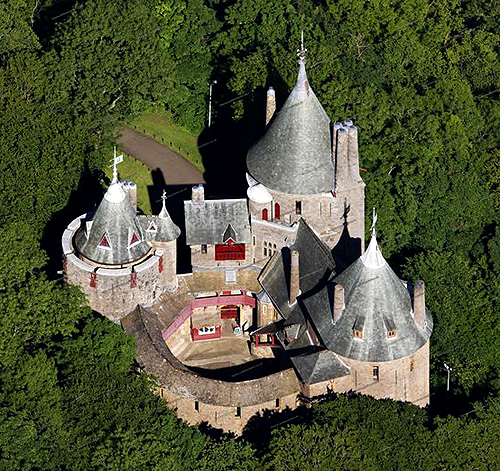 |
The Red Castle (Castell Coch), Cardiff, Wales
It is situated on a steep hillside high above the village of Tongwynlais, to the north of Cardiff in Wales, and is a Grade I listed building.
Castell Coch is a 19th-century Gothic Revival castle built on the remains of a genuine 13th-century fortification, cared for by Cadw, the Welsh Government's historic environment service.
Designed by William Burges, with working portcullis and drawbridge, and sumptuous interiors to rival those of Cardiff Castle, it has been described as "the most spectacular example of [Burgest's] translation from High Gothic into High Victorian." |
||||||||
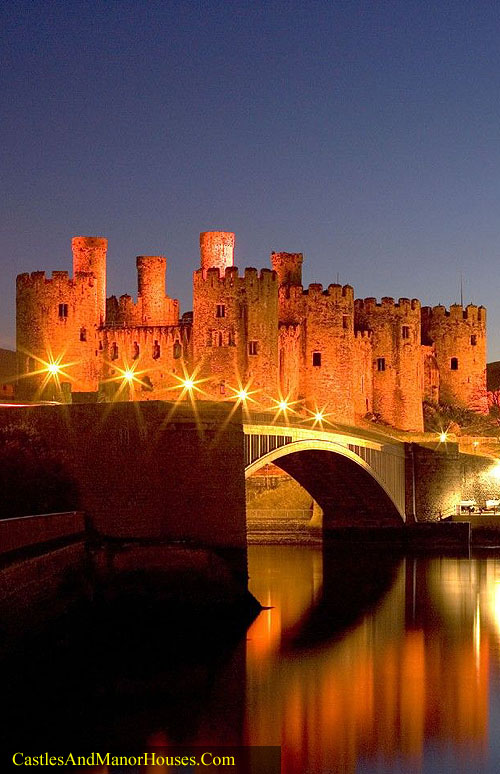 |
Castell Conwy (Conway Castle), Conway, Wales
Conway Castle is a medieval fortification on the north coast of Wales. It was built by Edward I, during his conquest of Wales, between 1283 and 1289. Over the next few centuries, the castle played an important part in several wars. It withstood the siege of Madog ap Llywelyn in the winter of 1294–95, acted as a temporary haven for Richard II in 1399 and was held for several months by forces loyal to Owain Glyndwr in 1401.
Following the outbreak of the English Civil War in 1642, the castle was held by forces loyal to Charles I, holding out until 1646 when it surrendered to the Parliamentary armies. In the aftermath the castle was partially slighted by Parliament to prevent it being used in any further revolt, and was finally completely ruined in 1665 when its remaining iron and lead was stripped and sold off.
UNESCO considers Conwy to be one of "the finest examples of late 13th century and early 14th century military architecture in Europe", and it is classed as a World Heritage site.
The castle has the earliest surviving stone machicolations in Britain Like Edwardian castles in North Wales, the architecture of Conwy has close links to that found in the kingdom of Savoy during the same period, an influence probably derived from the Savoy origins of the main architect, James of Saint George. |
||||||||
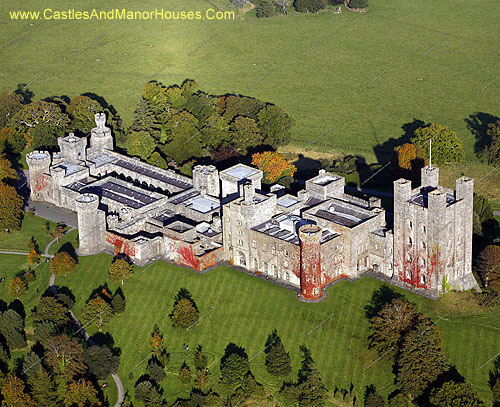 |
Penrhyn Castle Llandegai, Bangor, Gwynedd, North Wales
Penrhyn Castle is a country house built in the form of a Norman castle. It was originally a medieval fortified manor house, founded by Ednyfed Fychan. In 1438, Ioan ap Gruffudd was granted a licence to crenellate and he founded the stone castle and added a tower house. Samuel Wyatt reconstructed the property in the 1780s.
The present building was created between about 1822 and 1837 who expanded and transformed the building beyond recognition. Penrhyn is one of the numerous mock castles built in the United Kingdom in the 19th century. An obvious give-away are the large ground-level drawing room windows. Another is the castle's rectinear footprint. The castle also has some specially designed Norman style furniture, including a one ton slate bed made for Queen Victoria when she visited in 1859.
In 1951 the castle and 40,000 acres (160 km²) of land were accepted by the Treasury in lieu of death duties. It now belongs to the National Trust and is open to the public. |
||||||||
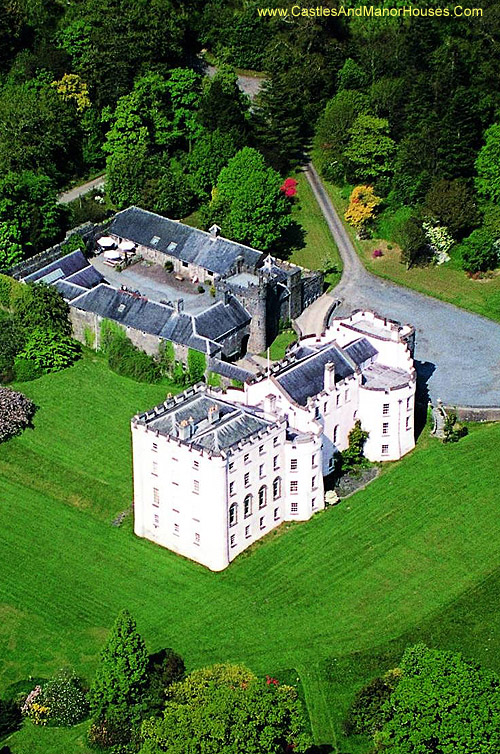 |
Picton Castle (Welsh: Castell Pictwn) near Haverfordwest in Pembrokeshire, Wales.
Picton Castle was originally built at the end of the 13th century by Sir John Wogan and is still inhabited by his descendants, the Philipps family (with titles Baron Milford and Viscount St Davids). |
||||||||
|
|
|||||||||
|
|
|||||||||
|
|
|||||||||
|
|
|||||||||
|
|
|
|
|||||||
|
|
|||||||||
| :::: Link to us :::: Castle and Manor Houses Resources ::: © C&MH 2010-2014 ::: contact@castlesandmanorhouses.com ::: Advertising ::: |